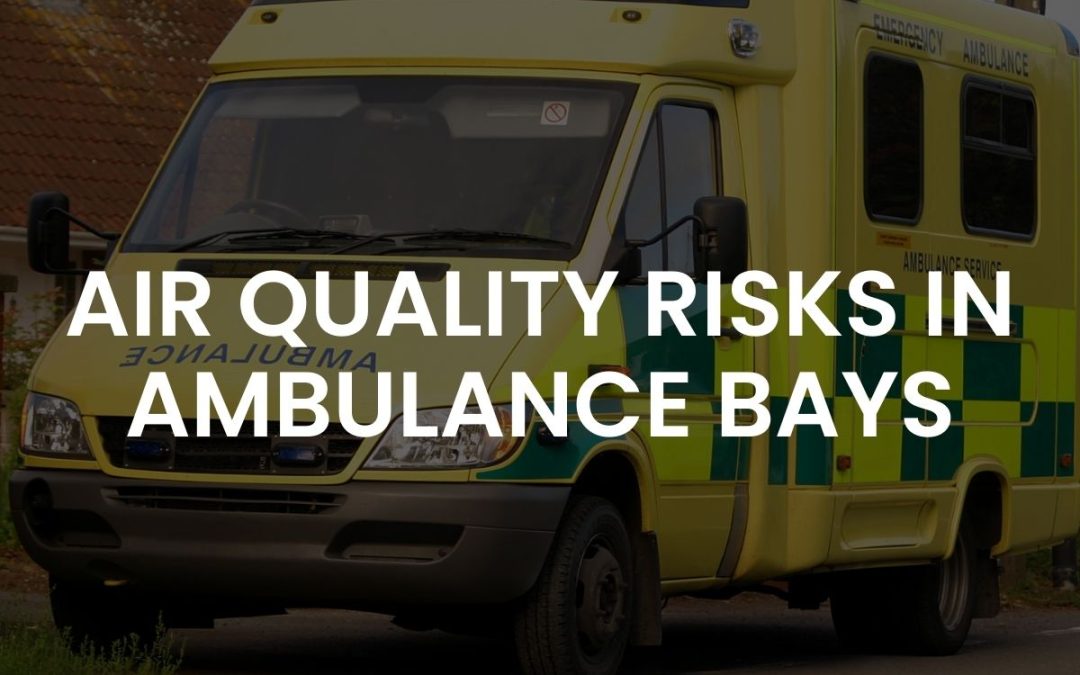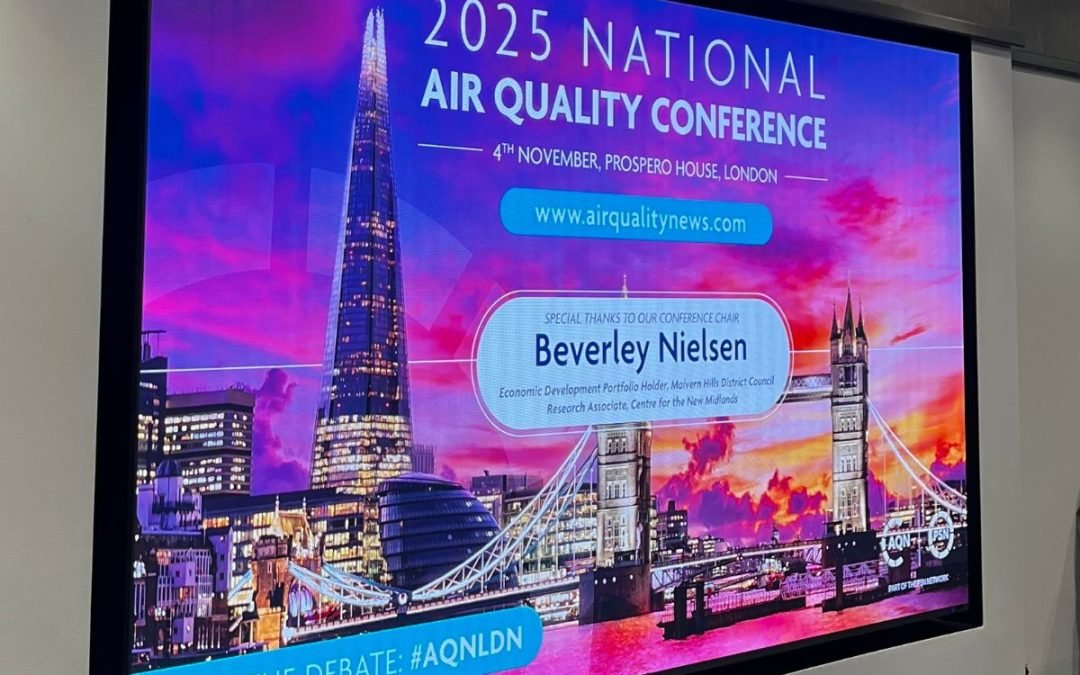Air quality monitoring is a critical component of environmental management, public health, and urban planning. As concerns about pollution and its impacts grow, the need for accurate, real-time air quality data has never been more pressing. While traditional monitoring methods provide valuable insights, EMSOL is taking air quality monitoring to the next level with its innovative approach.
Understanding Air Quality Monitoring
Before diving into EMSOL’s unique offering, let’s explore what air quality monitoring entails. Air quality monitoring refers to the continuous measurement of specific air pollutants, often called “criteria air pollutants“. These measurements help define the types and levels of pollution people are exposed to in various environments. Discover more about pollution and the serious health effects it can cause.
In the UK, there are approximately 300 Environment Agency-managed monitoring sites across the country. These sites form networks that track key pollutants like nitrogen dioxide (NO2), particulate matter (PM2.5 and PM10), and others.
The Evolving Landscape of Air Quality Monitoring
As air quality concerns continue to grow, the methods and technologies for monitoring pollution are rapidly evolving. Let’s explore some of the current trends and approaches in air quality monitoring:
1. Networked Air Quality Monitoring Systems
Cities and regions are increasingly deploying comprehensive air quality monitoring networks. For instance, the London Air Quality Network provides real-time data from numerous monitoring sites across the capital. Similarly, the World Air Quality Index project aggregates data from thousands of monitoring stations worldwide, offering a global perspective on air quality.
The data from these networks is often made publicly available, increasing transparency and awareness about air quality issues. This accessibility empowers citizens, researchers, and policymakers to make informed decisions and take targeted actions to improve air quality.
Learn more about choosing the right air quality monitoring solutions.
2. Citizen Science and Personal Air Quality Monitoring
The rise of affordable, portable air quality monitors has democratised air quality monitoring. Devices like the PurpleAir sensors allow individuals to contribute to a crowdsourced map of air quality data. This trend is empowering communities to take air quality monitoring into their own hands.
Personal air quality monitors are also raising awareness about indoor air pollution, encouraging individuals to take steps to improve the air quality in their homes and workplaces. This democratisation of air quality data is fostering a new level of environmental consciousness and driving demand for cleaner air.
3. Indoor Air Quality Monitoring
With people spending more time indoors, there’s growing interest in indoor air quality monitoring. The New York Times recently highlighted the importance of indoor air quality monitors, particularly CO2 monitors like the SAF Aranet 4.
Businesses, and even individuals, are increasingly investing in indoor air quality monitoring to ensure a healthy work environment for employees. This trend is likely to continue as awareness grows about the impact of indoor air quality on productivity and well-being.
4. Regulatory Approaches to Pollution
Government bodies continue to play a crucial role in air quality monitoring. In the UK, the Department for Environment, Food & Rural Affairs (Defra) maintains the UK-AIR website, which provides comprehensive air quality data and resources.
Not only is DEFRA a significant standard for many local authorities and businesses, the WHO (World Health Organisation), also sets important standards. The WHO recently updated its Air Quality Guidelines, significantly tightening the recommended limits for key pollutants. These new standards have far-reaching implications for businesses, governments, and communities worldwide.
To help you navigate these changes, we’ve created a comprehensive guide that breaks down the new WHO Air Quality Guidelines, explores their potential impact, and provides insights from real-world data. Our 10-minute video guide on the WHO Air Quality Guidelines covers everything from the new pollutant limits to the consequences for UK legislation and strategies for achieving compliance.
5. Industry-Specific Solutions
Different sectors have unique air quality monitoring needs. For instance, Bureau Veritas offers specialised air quality monitoring services for various industries. Similarly, National Highways has established a dedicated air quality monitoring network for road-related pollution.
The construction industry, in particular, is seeing a rise in dust and particulate matter monitoring solutions to comply with increasingly stringent regulations. These systems help protect both workers and nearby communities from the health impacts of construction-related air pollution. You can learn more about EMSOL’s approach to construction here.
6. Local Authority Initiatives For Cleaner Air
Many local councils are taking proactive steps in air quality monitoring. For example, Islington Council and Hackney Council have deployed monitors across their boroughs to measure key pollutants.
Community engagement is a key component of many local air quality initiatives. Authorities are using innovative methods, such as mobile monitoring stations and citizen science projects, to involve residents in air quality monitoring and improvement efforts.
7. Advanced Analytical Monitoring Tools
The future of air quality monitoring lies in advanced analytics and predictive modeling. The Mayor of London’s office, for instance, uses sophisticated models to predict air pollution levels.
Some cities are integrating air quality monitoring with other smart city technologies, such as traffic management systems. This holistic approach allows for real-time adjustments to traffic flow or public transportation schedules based on current air quality conditions, helping to mitigate pollution during peak periods.
8. Integration with Smart City Initiatives
As cities become smarter, air quality monitoring is increasingly being integrated with other urban management systems. The London Datastore, for example, provides open access to air quality data as part of its broader smart city initiatives.
While these advancements are significant, they often lack the comprehensive, action-oriented approach that EMSOL provides. EMSOL’s platform goes beyond simply monitoring air quality – it empowers organisations to take immediate, targeted action to reduce pollution at its source. By combining real-time monitoring with advanced analytics and source attribution, EMSOL represents the next evolution in air quality management.
As we continue to face air quality challenges, innovative solutions like EMSOL will be crucial in creating cleaner, healthier environments for all. Whether you’re a local authority, a business, or a concerned citizen, understanding and leveraging these evolving air quality monitoring technologies is key to addressing pollution effectively.
The EMSOL Air Quality Difference
While traditional monitoring networks provide valuable data, EMSOL takes air quality monitoring to new heights. Here’s how:
1. Real-Time, Actionable Insights
Unlike many monitoring systems that provide average readings over time, EMSOL offers real-time data on air quality. This allows for immediate action when pollution levels spike, rather than relying on historical data.
2. Source Attribution
One of EMSOL’s key differentiators is its ability to attribute pollution to specific sources. While traditional monitors might tell you that pollution levels are high, EMSOL can pinpoint whether it’s coming from a particular vehicle, construction site, or other source.
3. Integration with Business Operations
EMSOL doesn’t just monitor air quality – it integrates this data with business operations. This means companies can see how their activities directly impact local air quality and make immediate adjustments. For example, in retail and loading bay contexts. Waste contractors can also benefit from monitoring, especially when dealing with sites that are prone to high levels of dust pollution.
4. Comprehensive Pollutant Coverage
Like the best air quality monitors, EMSOL tracks a wide range of pollutants including PM2.5, PM10, and NO2. However, it goes beyond this to also monitor noise pollution, providing a more comprehensive picture of environmental impact.
5. User-Friendly Interface
While some air quality monitoring systems require technical expertise to interpret, EMSOL provides an intuitive, easy-to-use platform. This makes it accessible for a wide range of users, from environmental scientists to business managers [https://emsol.io/nhs/].
6. Customised Solutions
Unlike one-size-fits-all monitoring networks, EMSOL tailors its solution to each client’s needs. Whether you’re a construction company, a hospital, or a local authority, EMSOL can provide a monitoring solution that fits your specific requirements.
The Impact of EMSOL on Pollution Control
By providing real-time, source-attributed air quality data, EMSOL empowers organisations to take immediate action to reduce pollution. This can lead to:
- Improved compliance with air quality regulations
- Better community relations through demonstrated commitment to environmental stewardship
- Operational efficiencies by identifying and addressing sources of pollution
- Enhanced public health outcomes in local communities
Conclusion
While traditional air quality monitoring networks play a crucial role in understanding pollution trends, EMSOL takes this a step further. By providing real-time, actionable insights and source attribution, EMSOL is revolutionising how organisations approach air quality management.
As we continue to grapple with the challenges of air pollution, innovative solutions like EMSOL will be crucial in creating cleaner, healthier environments for all. Whether you’re a business looking to reduce your environmental impact, a local authority aiming to improve air quality, or a healthcare provider concerned about patient well-being, EMSOL offers a powerful tool for understanding and improving air quality.
Ready to take your air quality monitoring to the next level? Learn more about how EMSOL can help you achieve your environmental goals.





